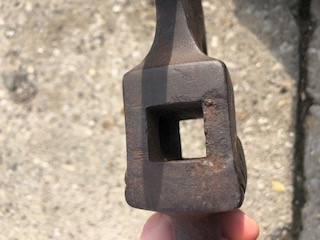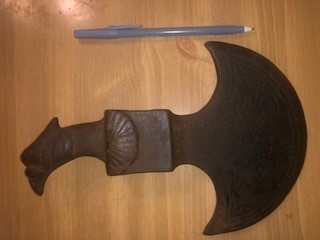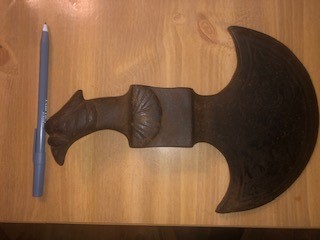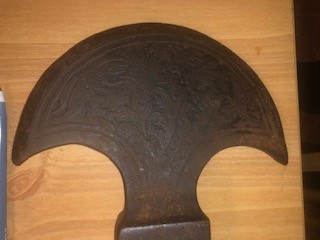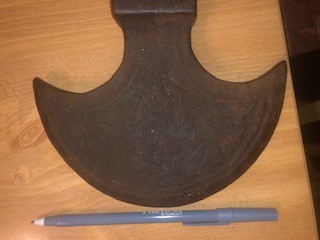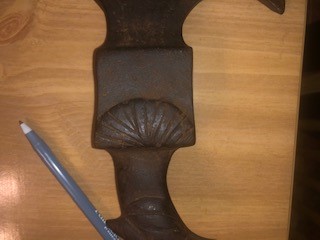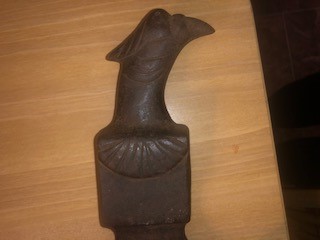Posts: 2 Location: United States
Sun 22 Dec, 2019 9:34 am
First off, just wanted to say thank you to everyone for commenting. As I have grown older, I have come to realize that the axe is more than likely a repop from the not too distant past. When I compared the axe head to my wife's cast iron pan, there were alot of similarities that I haven't noticed before. Someone had told me that cast iron should not be overly magnetic. The axe head is magnetic, though I also applied a magnet to my wife's cast iron pan and guess what, it was magnetic too. Comparing the two metals, it does appear to be somewhat similar. I think I am going to write this off as a repop (deep down I suspected it was true, just didn't want to admit it). It will be treated as a family heirloom and a symbol of my Father and I's relationship when I was little. I have attached some other photos that hopefully show a clearer picture of the floral pattern upon the head, as well as the falcon head. I don't think it is going to change anything, but I know they were asked for. Lastly, again I want to say thank you to everyone for their input. I do have a couple of other blades that I may post on here later this week. I am not a blade collector by any means, though if my Father happens to obtain one or two through trade they usually end up in my hands. These blades look much more authentic with the tang exposed (diff amounts of patina compared to blade), good patina, etc. Thanks again
 Attachment: 39.13 KB
Attachment: 39.13 KB
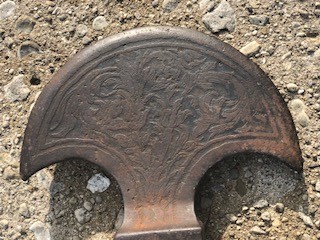
 Attachment: 38.46 KB
Attachment: 38.46 KB
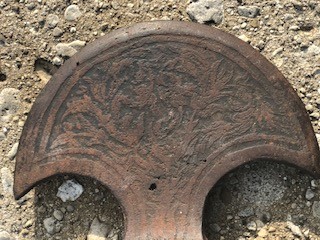
 Attachment: 37.98 KB
Attachment: 37.98 KB
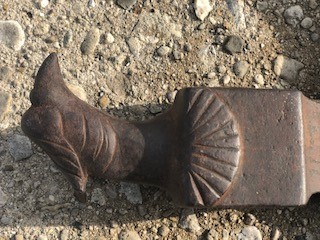
 Attachment: 38.11 KB
Attachment: 38.11 KB
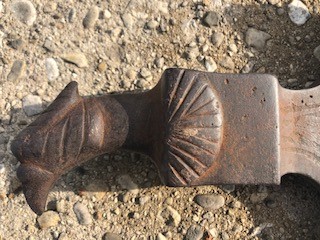
 Attachment: 22.4 KB
Attachment: 22.4 KB
